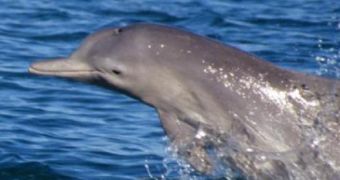Researchers with the Wildlife Conservation Society and the American Museum of Natural History have announced the discovery of a new humpback dolphin species.
The species was discovered by analyzing the anatomical particularities of the skulls of 180 dolphins that beached in Australia over the years, and by comparing DNA extracted from 235 dolphin tissue samples.
Interestingly enough, the researchers who worked on this project were not looking to discover a new species.
On the contrary, they merely wanted to make head and tail of the dolphin populations living in waters stretching from the eastern Atlantic to the western Pacific Oceans.
The previously undocumented marine mammals presently inhabit the waters off Australia's northern coastline. Like other humpback dolphin species, they sport an odd-looking bump just below their dorsal fin.
The Wildlife Conservation Society tells us that, together with this newly discovered species, the genus humpback now includes four distinct species.
Thus, there is the Atlantic humpback dolphin, and the Indo-Pacific humpback dolphin family, which in turn comprises three species. It is to this family that the previously unknown to science marine mammals are said to belong.
The researchers who documented this new species have not yet named it or studied it in detail.
However, they plan to sort out this issue as soon as possible, primarily because they hope that their work will help not just better understand the evolution of marine mammals, but also promote conservation efforts.
“This discovery helps our understanding of the evolutionary history of this group and informs conservation policies to help safeguard each of the species,” says Dr. Martin Mendez with the Wildlife Conservation Society's Latin America and the Caribbean Program.
“New information about distinct species across the entire range of humpback dolphins will increase the number of recognized species, and provides the needed scientific evidence for management decisions aimed at protecting their unique genetic diversity and associated important habitats,” adds Dr. Howard Rosenbaum with the Society's Ocean Giants Programs.

 14 DAY TRIAL //
14 DAY TRIAL //